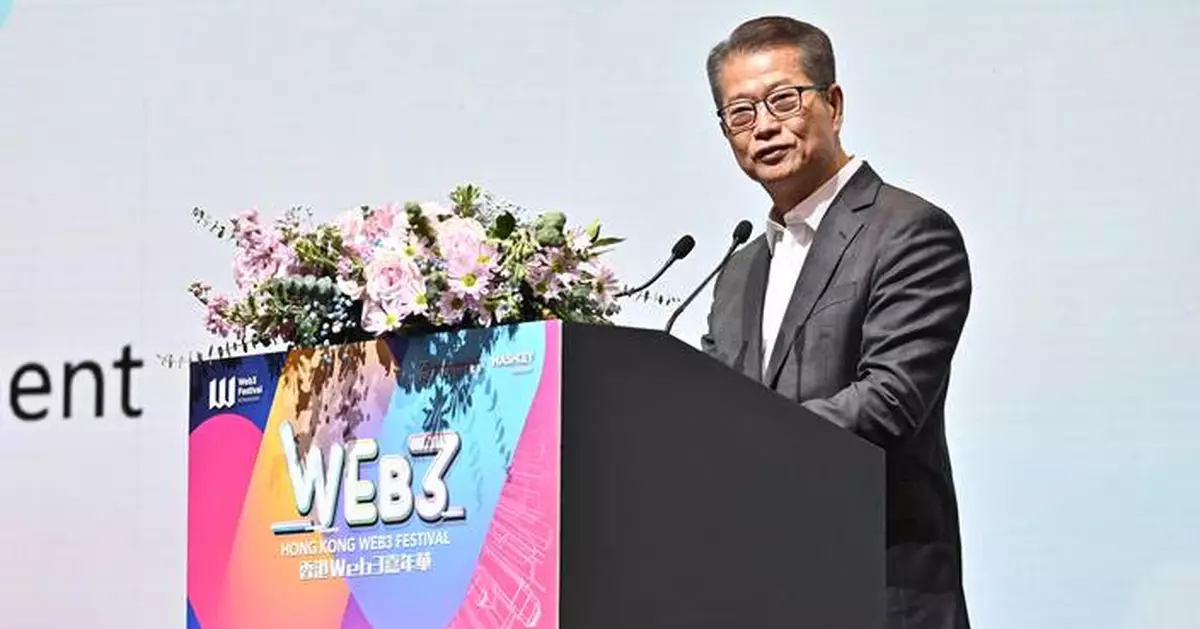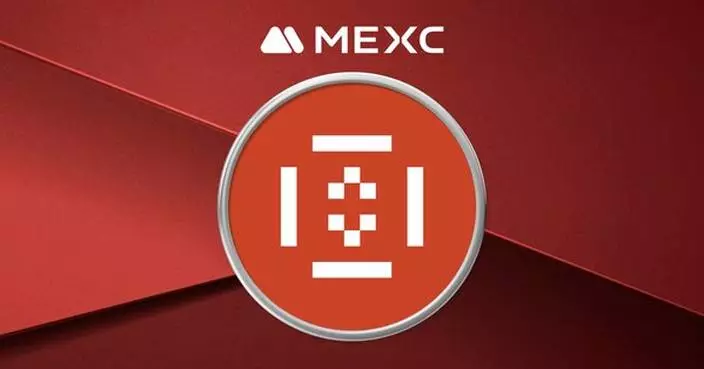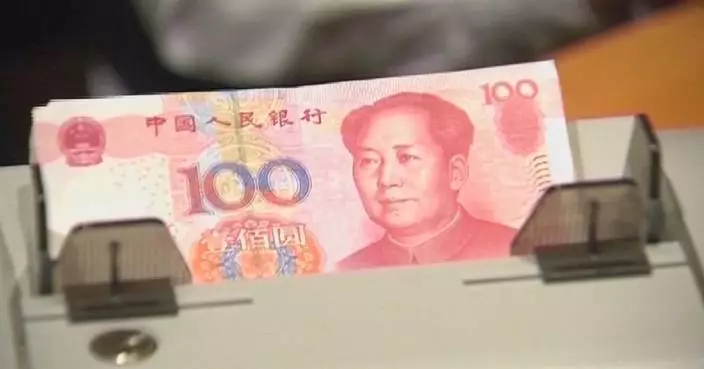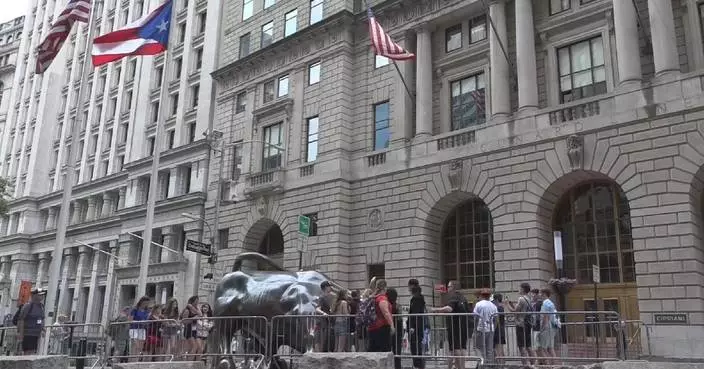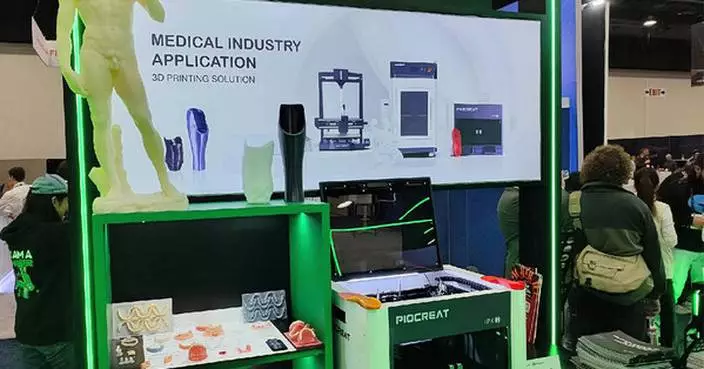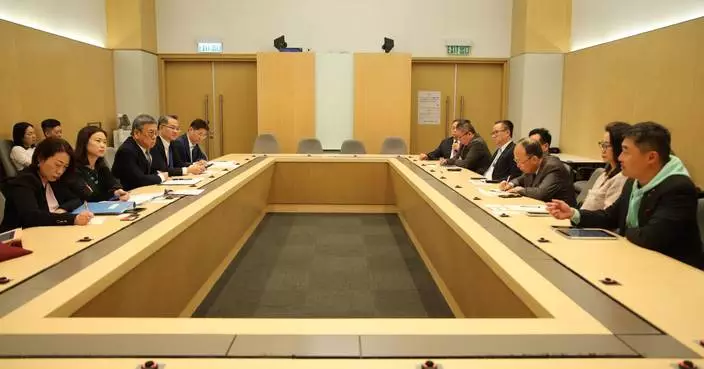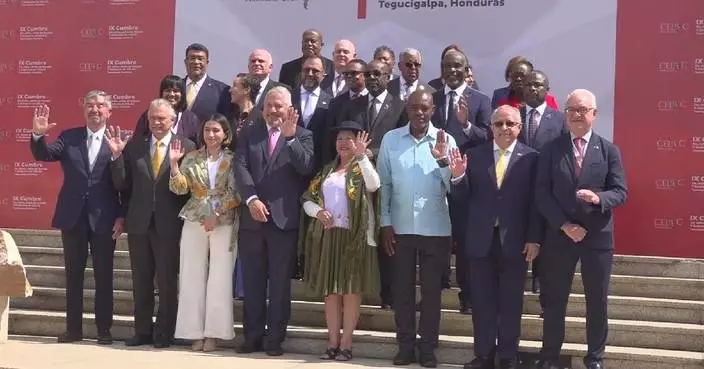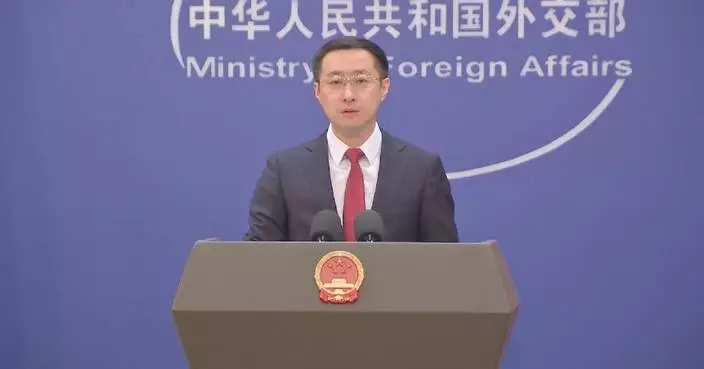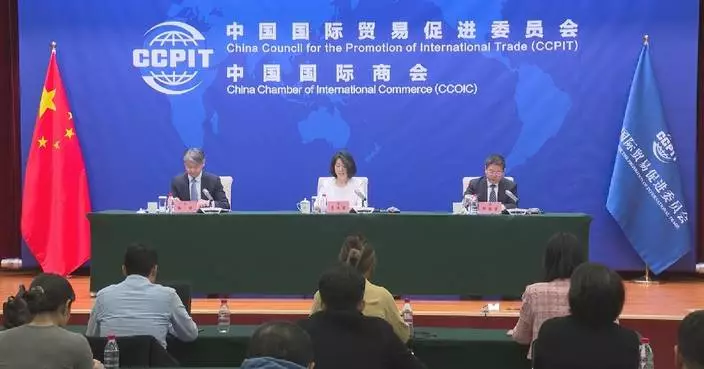Speech by FS at Hong Kong Web3 Festival (with photos/video)
Following is the speech by the Financial Secretary, Mr Paul Chan, at the Hong Kong Web3 Festival today (April 7):
魯偉鼎董事長 (Deputy to the National People's Congress, Vice Chairman of the All-China Federation of Industry and Commerce, the Chairman and Chief Executive Officer of Wanxiang Group, Mr Lu Weiding), 肖風董事長 (the Chairman of Wanxiang Blockchain and the Chairman and Chief Executive Officer of HashKey Group, Dr Xiao Feng), Duncan (Member of the Legislative Council Mr Duncan Chiu), distinguished guests, innovators, and pioneers of the digital frontier,
Good morning. It is an immense pleasure to join you all today at the Web3 Festival of Hong Kong, a gathering of brilliant leaders and innovators to share thoughts and experiences about the future of blockchain, cryptocurrencies, decentralised finance and beyond.
For those who have come from afar, a warm welcome to Hong Kong. As a city where East meets West and tradition intertwines with innovation, we are proud to host you to collectively chart the course of Web3.
As a technology, blockchain is displaying its vast potential, significantly increasing transaction efficiency, lowering costs and enhancing market transparency. Today, we are witnessing a marked increase in the institutional adoption of Web3, with traditional banks, asset managers and brokers increasingly integrating digital assets into their offerings.
As more jurisdictions embrace cryptocurrencies, the market has been energised with optimism, marked by a bullish trend over the past year or so.
But beyond finance and the enthusiasm on cryptocurrency, we all agree that blockchain can bring real benefits to the people. For example, ReFi (regenerative finance) is gaining traction. Tokenised carbon credits enable the transparent tracking of emissions reductions, reinforcing trust in voluntary carbon markets.
Meanwhile, the convergence of Web3 and AI is unlocking new frontiers. In finance, decentralised AI algorithms enhance credit assessments, audit smart contracts with greater precision, and deliver hyper-personalised investment strategies. Beyond finance, this synergy streamlines supply chains, revolutionises healthcare data management, and creates new immersive gaming experiences. Web3 and AI are transforming businesses and public services, driving innovation and efficiency at every turn.
Hong Kong: driving Web3 innovation
Allow me to take a few minutes to talk about Web3 in Hong Kong, our attitude and approach towards Web3 and our role in this global transformation.
Hong Kong is pro-Web3. Over two years ago, we published a high-level policy statement on the development of virtual assets, affirming our commitment to a dynamic Web3 ecosystem. Central to this is the principle of the "same activity, same risk, same regulation". Through a balanced and pro-innovation regulatory approach, we seek to maintain a level playing field for market participants and encourage innovative activities in this space.
We have been walking the talk, and have delivered a number of initiatives. We were among the first in the world to have established clear licensing frameworks for virtual asset trading platforms, or VATPs. Indeed, the Securities and Futures Commission has already issued 10 VATP licences. We have also authorised VA spot ETFs (exchange-traded funds) last year, and Hong Kong now hosts the largest VA ETF market in the Asia Pacific, bridging traditional finance with crypto innovation.
Meanwhile, legislation for stablecoin regulation is set for imminent passage. My colleagues at the Financial Services and the Treasury Bureau and the Hong Kong Monetary Authority (HKMA) are working hard to get the relevant licensing regime to go live within this year.
The Government will also conduct consultations on the licensing regimes of over-the-counter trading services and custodian services for VA (virtual assets). This will solidify Hong Kong's comprehensive regulatory architecture.
Let me make clear that Hong Kong's approach to Web3 is not simply about regulation. We aim to strike a balance, ensuring market integrity without stifling innovation. After all, innovation entails risks. The lesson we have learnt is that we need to put it under a balanced regulatory framework so as to enable the sector to grow in a responsible and sustainable manner.
One essential element in our regulatory regime is sandboxes, such as the HKMA's Project Ensemble. Project Ensemble allows innovators to test various use cases, such as tokenised real-world assets, with early regulatory feedback. This signifies our pro-innovation approach, as we put regulators and innovators in a co-creation process.
Later this year, we will unveil a second policy statement on the development of virtual assets. It will cover how to make use of Web3 to fast-track the development of traditional financial services, empower the real economy and strengthen the application of digital asset technologies.
A few thoughts on Web3
Now, looking ahead, allow me to share a few thoughts we consider important for the future development and success of Web3.
First, it is the very vision of Web3 to enable more equitable use of the Internet, and make transactions more efficient and less costly. Innovation is core to this goal, and regulators should adopt a technology-neutral approach. It would only be counterproductive if jurisdictions or regulatory authorities favour particular types of cryptocurrencies, or rule out technologies or applications at the outset. Markets, not mandates, should decide which innovations prevail.
Second, we all know Web3's true potential lies well beyond digital assets or cryptocurrencies. Combined with AI, it can be a valuable tool to optimise impact investments, promote inclusive finance, support decarbonisation initiatives, advance sustainable development goals, and more. The global Web3 community should and can strengthen collaboration to support these worthy causes.
Finally, it is essential that new technologies be developed and applied responsibly. AI, for instance, is evolving at speeds that are unexpectedly faster. Decentralised networks bring enormous benefits, but when coupled with AI, challenges such as algorithmic bias, deepfakes and cybersecurity require attention and co-operation at the regional and global levels. Here in Hong Kong, we advocate for suitable guardrails - frameworks that protect investors, consumers and users while encouraging innovation activities. We support a multi-stakeholder approach where governments, regulators and market players across different territories and regions come together to drive forward the sustainable development of Web3.
Concluding remarks
Ladies and gentlemen, to secure a promising and successful future for Web3, we need not just technological innovation, but also a common will to harness creativity and innovation for the benefit of the people. Let me assure you that Hong Kong is committed to this goal. We are here to collaborate with innovators and entrepreneurs from around the world, pushing the boundaries of what is possible, and leveraging the transformative power of Web3 for the greater good. Thank you very much.
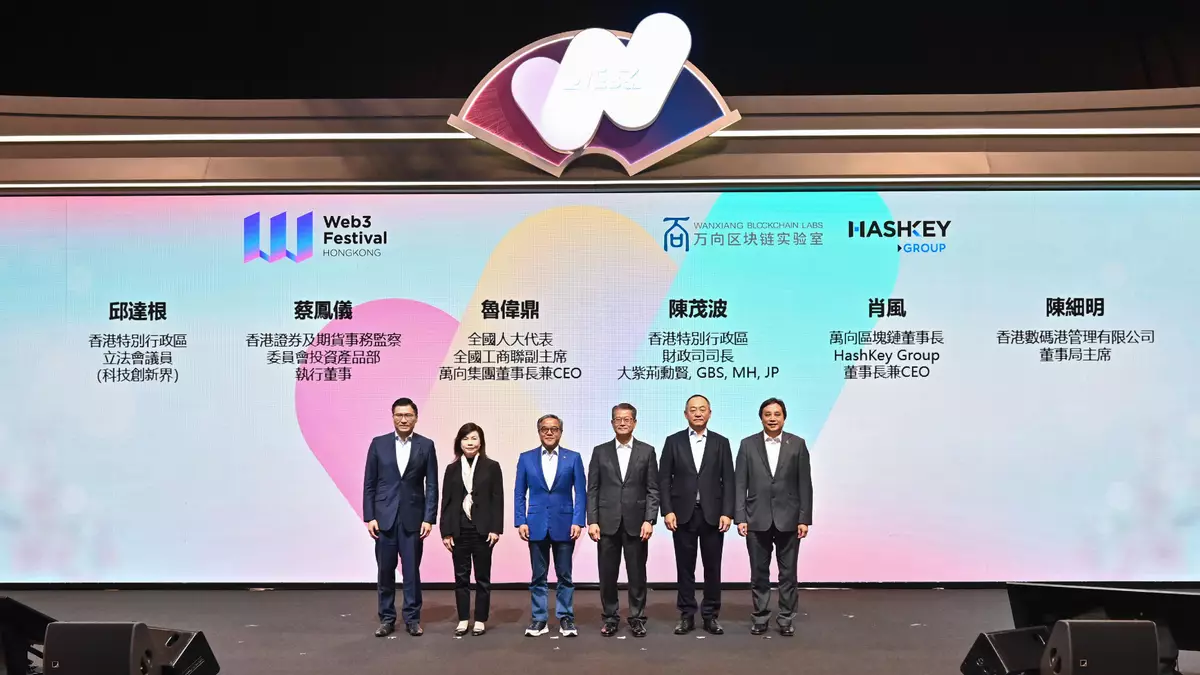
Speech by FS at Hong Kong Web3 Festival Source: HKSAR Government Press Releases
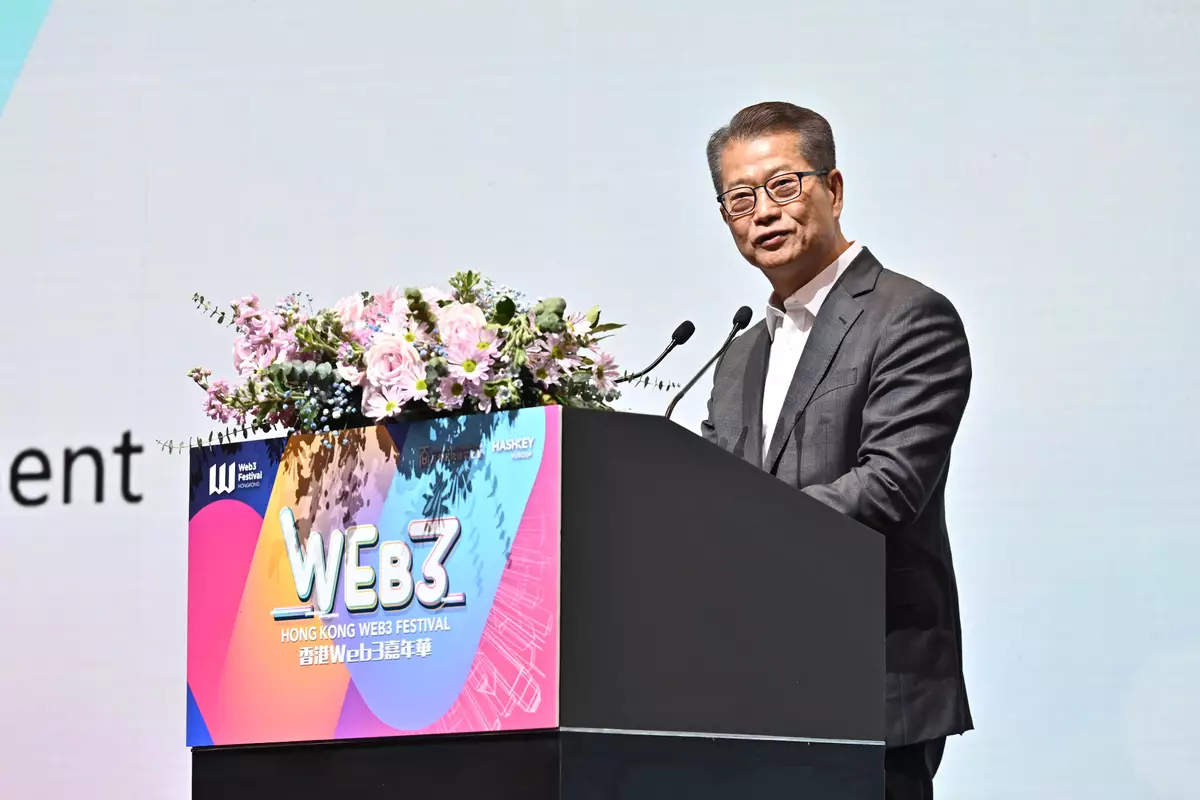
Speech by FS at Hong Kong Web3 Festival Source: HKSAR Government Press Releases
Opening remarks by SITI at LegCo Finance Committee special meeting
Following are the opening remarks (English translation) by the Secretary for Innovation, Technology and Industry, Professor Sun Dong, at the special meeting of the Legislative Council Finance Committee today (April 11):
Chairman, Members,
Technological and industrial innovations are the fundamental pathways for developing new quality productive forces. This year's Budget continues to place focus on accelerating Hong Kong's high-quality development through the promotion of Hong Kong's innovation and technology (I&T) development and announced various new initiatives to lead Hong Kong steadily towards our vision of becoming an international I&T centre. I will give an overview of the relevant key measures along three directions.
(1) To enhance the I&T ecosystem and promote "new industrialisation" in Hong Kong and to enlarge the I&T talent pool to create strong impetus for growth
Artificial intelligence (AI) is at the core of accelerating the development of new quality productive forces, and we are endeavouring to develop AI as a core industry. The Budget has set aside $1 billion for the establishment of the Hong Kong Artificial Intelligence Research and Development Institute, which will spearhead and support Hong Kong’s innovative research & development (R&D) and industrial applications of AI. Furthermore, Cyberport's Artificial Intelligence Supercomputing Centre (AISC) has commenced operation, and with the support of the Government's Artificial Intelligence Subsidy Scheme, several R&D projects related to large language models, large models in new materials and synthetic biology that utilise the AISC's computing power have already started.
On promoting the development of I&T industries, we launched the New Industrialisation Acceleration Scheme and enhanced the New Industrialisation Funding Scheme last year. Also, the Innovation and Technology Industry-Oriented Fund is under preparation, and we plan to seek funding approval from the Legislative Council in the middle of this year. Furthermore, we will launch the Pilot Manufacturing and Production Line Upgrade Support Scheme this year to provide funding of up to $250,000 each on a 1(Government) : 2(Company) matching basis to enterprises operating production lines in Hong Kong to support their formulation of smart production strategies and introduction of advanced technologies into existing production lines. We are also preparing for the launch of the Pilot I&T Accelerator Scheme to further strengthen the support to start-ups.
To promote R&D, we are taking forward the establishment of the third InnoHK research cluster, which will focus on advanced manufacturing, materials, energy and sustainable development, and have established the Hong Kong Space Robotics and Energy Centre under the InnoHK Research Clusters, with the aim of developing a robot which will contribute to the Chang'E-8 mission. The Hong Kong Microelectronics Research and Development Institute is preparing the set-up of two pilot lines at the Microelectronics Centre in Yuen Long this year, striving to put them into operation next year to support product development and trial production. Furthermore, we have invited institutions to submit proposals for the Subsidy Programme for the Setup of Life and Health Technology Research Institute(s), and will also seek funding approval from the Finance Committee of the Legislative Council in the middle of this year for the implementation of the Frontier Technology Research Support Scheme.
As for I&T land, the Government is taking forward the development of the Hong Kong Park of the Hetao Shenzhen-Hong Kong Science and Technology Innovation Co-operation Zone (the Hong Kong Park) at full steam. The Hong Kong Park is developed in two phases from west to east. With the first three buildings in Phase 1 approaching completion, the Park will officially enter into its operational phase later this year. The construction of the other five buildings is in full swing and is expected to be completed progressively from 2027 onwards. As for the remaining sites of Phase 1, we will identify suitable land parcels for invitation of private development proposals this year, with a view to taking forward the development of the Park with enhanced speed and quantity through collaboration between the Government and the market. In addition, $3.7 billion has been earmarked in the Budget to expedite the completion of infrastructure and public facilities of Phase 1 of the Park. At the same time, the Government of the Hong Kong Special Administrative Region will continue to work with relevant Mainland authorities to explore the implementation of innovative policy measures, with a view to promoting the convenient cross-boundary flow of innovation elements.
The San Tin Technopole of the Northern Metropolis will serve as a strategic key for the I&T industry planning and the base for developing new quality productive forces of Hong Kong in the future. The Hong Kong Science and Technology Parks Corporation is conducting a master planning study for the first batch of 20-hectare land. The study is expected to be completed in the third quarter of this year. The Government commenced the re-zoning procedures for a 10-hectare site at Sandy Ridge for use as data centres and related facilities in end-2024, and is actively making preparations for land disposal to fulfil the needs of the industry for digital infrastructure.
(2) To promote digital economy development and develop Hong Kong into a smart city
The Government is committed to providing more efficient public services to citizens through leveraging technology. The "iAM Smart" has over 3.3 million registered users and over 1 100 online services and e-forms provided by the Government and public and private organisations. We are driving the comprehensive upgrade of "iAM Smart" to realise "single portal for online government services" by the end of this year. Meanwhile, The "Digital Corporate Identity" Platform will be rolled out progressively from end-2026, with a view to facilitating digital transformation of corporations and enhancing government departments’ efficiency in processing corporate online applications.
In addition, the Digital Policy Office will continue to co-ordinate all bureaux and departments to use the HKPilot developed by the Hong Kong Generative AI Research and Development Center on a trial basis, and gradually increase the number of participants in the pilot programme. This will help reduce the manpower required of government personnel to handle general document processing tasks, allowing manpower to be deployed to other areas of need.
(3) To proactively integrate into the overall development of the country and consolidate our role as a bridge connecting the Mainland and the world
Hong Kong will continue to deepen I&T co-operation with the Mainland for better integrating into overall national development. Regarding cross-boundary data flow, the "Standard Contract for the Cross-boundary Flow of Personal Information Within the Guangdong-Hong Kong-Macao Greater Bay Area (Mainland, Hong Kong)" facilitation measure has been extended to all industries, promoting the safe and orderly cross-boundary flow of personal information within the Guangdong-Hong Kong-Macao Greater Bay Area. In addition, Cyberport has been actively collaborating with the Qianhai Management Authority to facilitate the landing of start-up enterprises at respective parks, and the World Intellectual Property Organization Global Innovation Index 2025 Science and Technology Cluster Launch will be held in Hong Kong later this year.
Conclusion
With our country's staunch support, Hong Kong has been making steady progress towards our vision of developing into an international I&T centre. The Government will continue to deploy resources and join hands with stakeholders to promote the development of a vibrant I&T ecosystem. I would like to express my gratitude to all Members again for their support of I&T development all along. I appeal for the continual support of Members and the public for the work of the Innovation, Technology and Industry Bureau. Thank you, Chairman.




